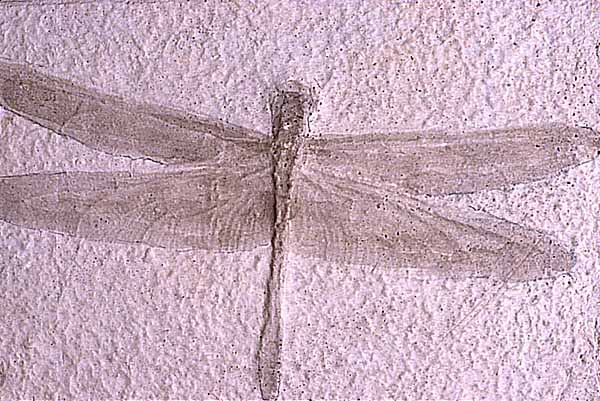
A fossil of Protolindenia wittei, a dragonfly with a wingspan of about 15 cm. This exquisitely preserved specimen comes from the Jurassic Solnhofen limestones of Bavaria, Germany.
Perfect specimen - completly intact. How could that be?
Thanks again. :’)
Immanuel Velikovsky
Earth In Upheaval: The Aquatic Graveyards
(p 19)
An identical picture can be found in many other places all around the world, in similar and dissimilar formations. Of Monte Bolca, near Verona in northern Italy, Buckland wrote: “The circumstances under which the fossil fishes are found at Monte Bolca seem to indicate that they perished suddenly. . . . The skeletons of these fish lie parallel to the laminae of the strata of the calcareous slate; they are always entire, and closely packed on one another. . . . All these fishes must have died suddenly . . . and have been speedily buried in the calcareous sediment then in the course of deposition. From the fact that certain individuals have even preserved traces of colour upon their skin, we are certain that they were entombed before decomposition of their soft parts had taken place.”
The same author wrote about the fish deposits in the area of the Harz Mountains in Germany: “Another celebrated deposit of fossil fishes is that of the cupriferous slate surrounding the Harz. Many of the fishes of this slate at Mansfeld, Eisleben, etc., have a distorted attitude, which has often been assigned to writhing in the agonies of death. ... As these fossil fishes maintain the attitude of the rigid stage immediately succeeding death, it follows that they were buried before putrefaction had commenced, and apparently in the same bituminous mud, the influx of which had caused their destruction.”
The slory of agony and sudden death and immediate encasing is told by the red sandstone of Scotland; the limestone of Monte Bolca in Lombardy; the bituminous slate of Mansfeld in Thuringia; and also by the coal formation of Saarbrucken on the Saar, “the most celebrated deposits of fossil fishes in Europe”; the calcareous slate of Solenhofen; the blue slate of Glarus; the marlstone of Oensingen in Switzerland and of Aix-in -Provence, to mention only a few of the better-known sites in Europe.
In North America similar strata, “packed full of splendidly preserved fishes,” are found in the black limestone of Ohio and Michigan, in the Green River bed of Arizona, the diatom beds of Lompoc, California, and in many other formations.
In cataclysms of early ages fishes died in agony; and the sand and the gravel of the upthrust sea bottom covered the aquatic graveyards.

A fossil of Protolindenia wittei, a dragonfly with a wingspan of about 15 cm. This exquisitely preserved specimen comes from the Jurassic Solnhofen limestones of Bavaria, Germany.
Perfect specimen - completly intact. How could that be?
So, how do you drown a fish?